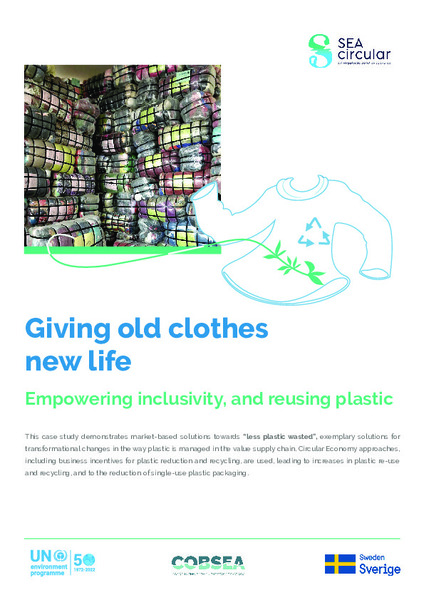| dc.contributor | Asia & Pacific Office | en_US |
| dc.contributor.author | United Nations Environment Programme | en_US |
| dc.contributor.author | Coordinating Body on the Seas of East Asia | en_US |
| dc.coverage.spatial | Asia and the Pacific | en_US |
| dc.date.accessioned | 2022-08-22T13:42:37Z | |
| dc.date.available | 2022-08-22T13:42:37Z | |
| dc.date.issued | 2022-08 | |
| dc.identifier.uri | https://wedocs.unep.org/20.500.11822/40498 | |
| dc.description | This case study demonstrates market-based solutions towards “less plastic wasted”, exemplary solutions for transformational changes in the way plastic is managed in the value supply chain. Circular Economy approaches, including business incentives for plastic reduction and recycling, are used, leading to increases in plastic re-use and recycling, and to the reduction of single-use plastic packaging. | en_US |
| dc.format | Text | en_US |
| dc.language | English | en_US |
| dc.relation.ispartof | SEA Circular Project | en_US |
| dc.rights | Public | en_US |
| dc.subject | recycling | en_US |
| dc.subject | reuse | en_US |
| dc.subject | plastic | en_US |
| dc.subject | clothing industry | en_US |
| dc.subject | synthetic fibre | en_US |
| dc.subject | plastic waste | en_US |
| dc.subject | circular economy | en_US |
| dc.title | Giving Old Clothes New Life: Empowering Inclusivity, and Reusing Plastic | en_US |
| wd.identifier.sdg | SDG 9 - Industry, Innovation and Infrastructure | en_US |
| wd.identifier.sdg | SDG 12 - Responsible Consumption and Production | en_US |


